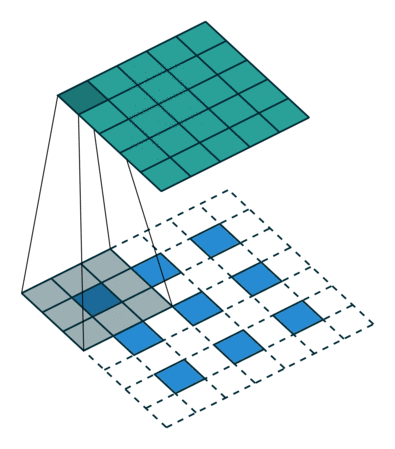How does the unpooling and deconvolution work in DeConvNet
1 Unpooling.
In the original paper on unpooling, remaining activations are zeroed.
2 Deconvolution.
A deconvolutional layer is just the transposed of its corresponding conv layer. E.g. if conv layer's shape is [height, width, previous_layer_fms, next_layer_fms], than the deconv layer will have the shape [height, width, next_layer_fms, previous_layer_fms]. The weights of conv and deconv layers are shared! (see this paper for instance)
Unpooling
As etoropov wrote, you can read about unpooling in Visualizing and Understanding Convolutional Networks by Zeiler and Ferguson:
Unpooling: In the convnet, the max pooling operation is non-invertible, however we can obtain an approximate inverse by recording the locations of the maxima within each pooling region in a set of switch variables. In the deconvnet, the unpooling operation uses these switches to place the reconstructions from the layer above into appropriate locations, preserving the structure of the stimulus. See Fig. 1(bottom) for an illustration of the procedure.
Deconvolution
Deconvolution works like this:
- You add padding around each pixel
- You apply a convolution
For example, in the following illustration the original blue image is padded with zeros (white), the gray convolution filter is applied to get the green output.

Source: What are deconvolutional layers?